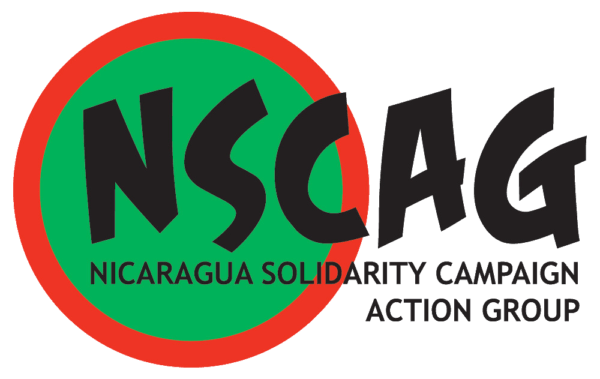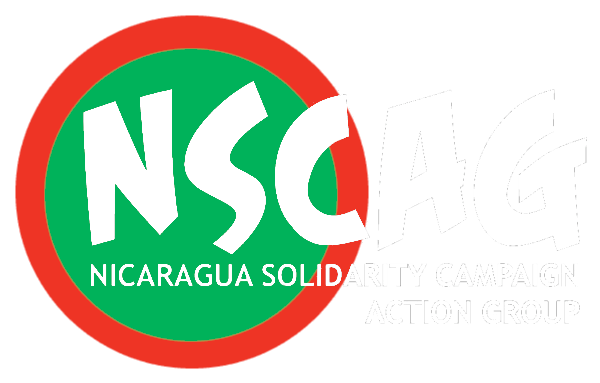Nicaragua Solidarity Campaign Action Group
25 March 2025
Celebrating 45th anniversary of the literacy crusade March – August 1980
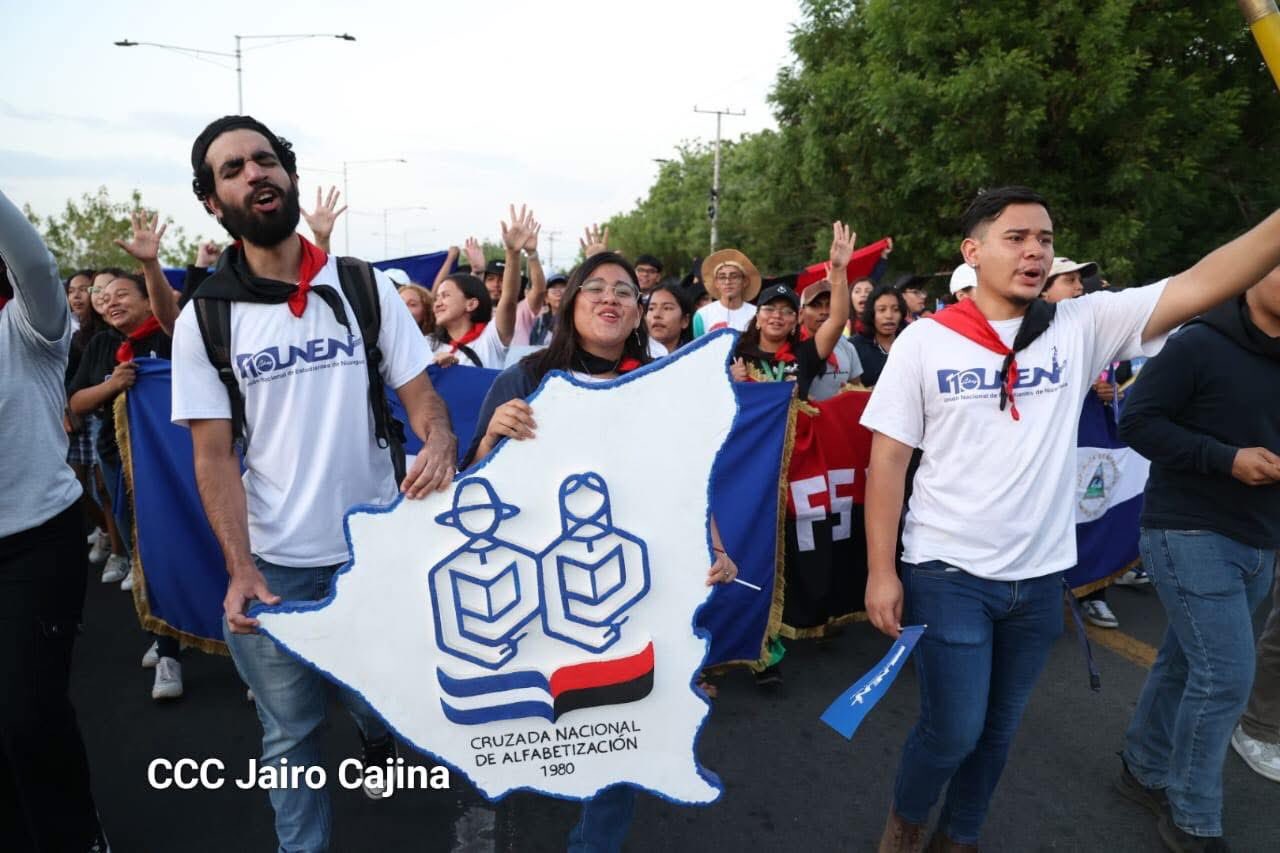
After the triumph of the Sandinista Revolution in 1979, the key priority was building ‘a new model of society based on equality, well being, solidarity and social justice’.
The literacy crusade expressed in an integrated way all aspects of this model: eradicating illiteracy; building understanding between Nicaraguans of different classes and backgrounds; gender equality; raising political awareness; and nurturing creativity, cooperation, and critical thinking; and building national cohesion.
The first step was to study the literacy experiences of sister countries such as Cuba, Mozambique, Guinea-Bissau, and Cape Verde, and to consult experts in the field such as Paulo Freire, and advisors from UNESCO and other organisations.
In the Nicaraguan adaptation of Freire’s method, a national textbook titled “The Dawn of the People,” provided a standard set of words and exercises relevant to the lives of the learners with lessons based on recent Nicaraguan history and the Nicaraguan Revolution
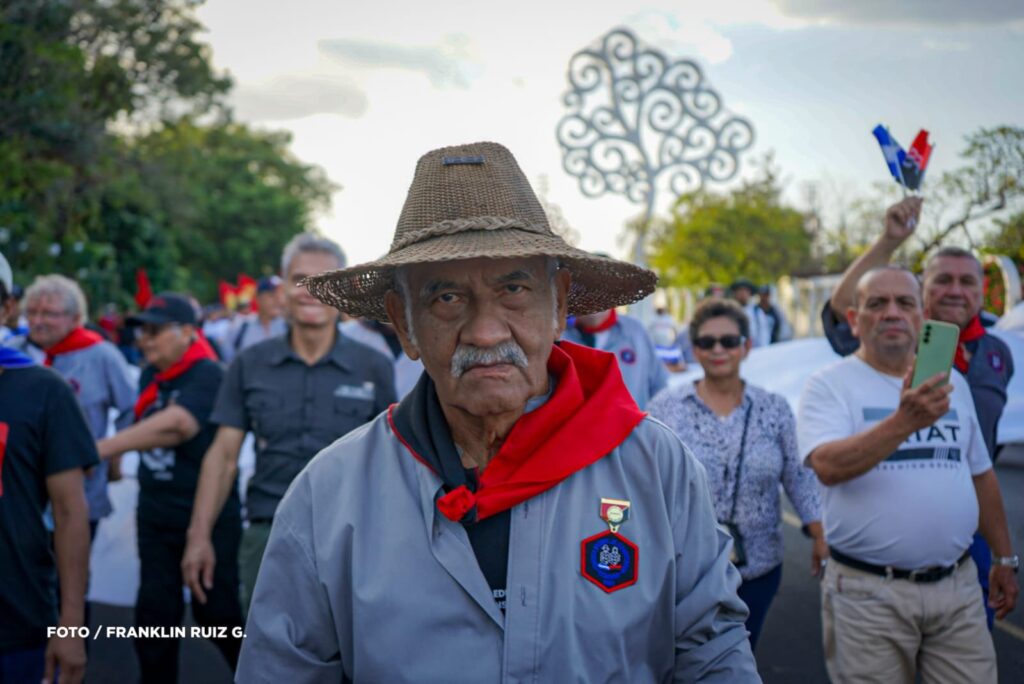
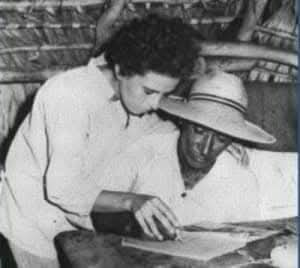
On 23 March 1980, the great Literacy Campaign began. The schools closed for five months and all those who could read and write, but especially teachers and young people over 12, were invited to join in.
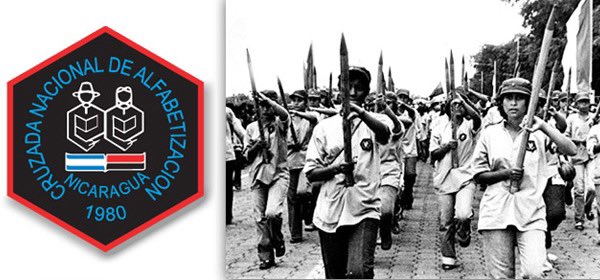
Now we are going to war not with guns, pistols and rifles but with pencils and notebooks.
Over 60,000 young people and 30,000 adults mostly from urban areas received basic training in teaching literacy before being assigned to rural communities to spend five months living and working with families and teaching them to read and write. Thousands of others provided logistical support, bringing total numbers involved in the campaign to one fifth of the population. Women made up 60% of brigadistas and 50% of literacy learners.
The Campaign was very much a two way process as summed up in this extract from a letter written by a campesina to the mother of a brigadista who taught her to read and write. ‘I am no longer ignorant, I know how to read. And your son isn’t ignorant any more either. Now he knows how we live, what we eat, how we work, and he knows life in the mountains. Your son has learned to read from our book.’
As a result of the campaign, illiteracy was reduced from 56% to 12%. Nicaragua was awarded the UNESCO Nadezhda K. Krupskaya award in September 1980 in recognition of this success.
In 1981 additional literacy campaigns were held in Nicaragua’s Caribbean coast in the local languages: Miskito, Sumo and Nicaraguan Creole.
These innovative and highly successful literacy initiatives not only dramatically reduced illiteracy in Nicaragua, they also inspired and informed other literacy projects around the world.
The role of the Nicaragua Solidarity Campaign (NSC) in raising awareness, and contributing funds to the literacy crusade
NSC, set up in 1978, contributed by raising awareness and backing for the Literacy Crusade by publishing an 80 page booklet called ‘The Loss of Fear.’ This was part of a wider campaign to support education in Nicaragua through building alliances with the National Union of Teachers (now the National Education Union) and raising £5,000 (the equivalent of £21,000 in 2025) to contribute to literacy crusade costs.
A 1980 conference on education in Nicaragua attracted more than 80 people many of whom became long-term NSC members and supporters. NSC was also instrumental in gathering the support of 133 MPs, MEPs and members of the House of Lords for the 1981 Nobel Peace Prize nomination of the Literacy Crusade and its director Father Fernando Cardenal.
For more information about the Literacy Crusade see here for an article written by Kathy Hoyt, former co-ordinator of the US Nicaragua Network, who lived in Matagalpa from 1966 – 1984 and whose family participated in the Literacy Crusade.
